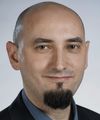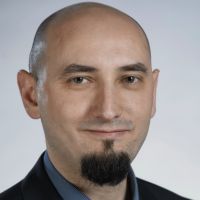Former Ranković Group
Restorative cochlear genomics
The aim of our group is to investigate, optimize and provide reliable gene transfer to cochlear structures by combining molecular biology, protein biochemistry, immunochemistry, and optogenetics. We collaborate with physiologists applying optogenetics and studying hearing and deafness. Our group focuses on the design, optimization and testing of various channelrhodopsins (ChRs) for cochlear optogenetics. Moreover, we devise strategies for gene therapeutic approaches to deafness. Our group provides research grade adeno-associated viral (AAV) vector preparations and related services for in vitro and in vivo applications. Challenges are the large size of some of the cDNA transcripts, identifying viral serotypes with specific tropism for auditory neurons and the efficiency of AAV transduction, as well as adjusting appropriate expression levels of genes of interest. Using AAV gene transfer, we aim to restore the hearing by designing the ChRs specific to spiral ganglion neurons (SGNs) that will be efficiently used in combination with optical stimulation by tens of microscale light emitters along the tonotopic axis of the cochlea (cochlear optogenetics). In addition, we aim to restore hearing in mouse models of human genetic deafness. For both applications we already have proof of principle in rodents. In the future we aim to develop cochlear optogenetics and hearing restoration by gene editing in larger animals such as non-human primates. Last but not the least, the group is interested in providing biosafety information after alien gene transfer (mainly ChRs) into cochlear structure as a part of larger inter-disciplinary study as required for future late preclinical and early clinical trials.
Within Institute for Auditory Neuroscience we extensively collaborate with the Moser Group and the Jeschke Group in development of cochlear optogenetics and future translation to non-human primates and with Moser, Vogl and Pangršič groups on gene therapeutic strategies targeting inner hair cells. Further collaborators include Dr. Volker Buskamp (Technische Universität Dresden, CRTD), Prof. Dr. Wolfram Zimmermann (UMG, Göttingen) and Dr. Maria-Patapia Zafeiriou (UMG, Göttingen).
Major research directions of the group:
1. Optimization and manufacturing of the viral vectors for the cochlear genomics
2. Development of viral transfer of suitable ChR variants into SGNs
3. Development of viral transfer of suitable rescue variants or the genes related to synaptic physiology into IHCs
4. The study of the biology of, and host response to alien gene transfer
Former members

Burak Bali


 https://orcid.org/0000-0003-0285-5232
https://orcid.org/0000-0003-0285-5232